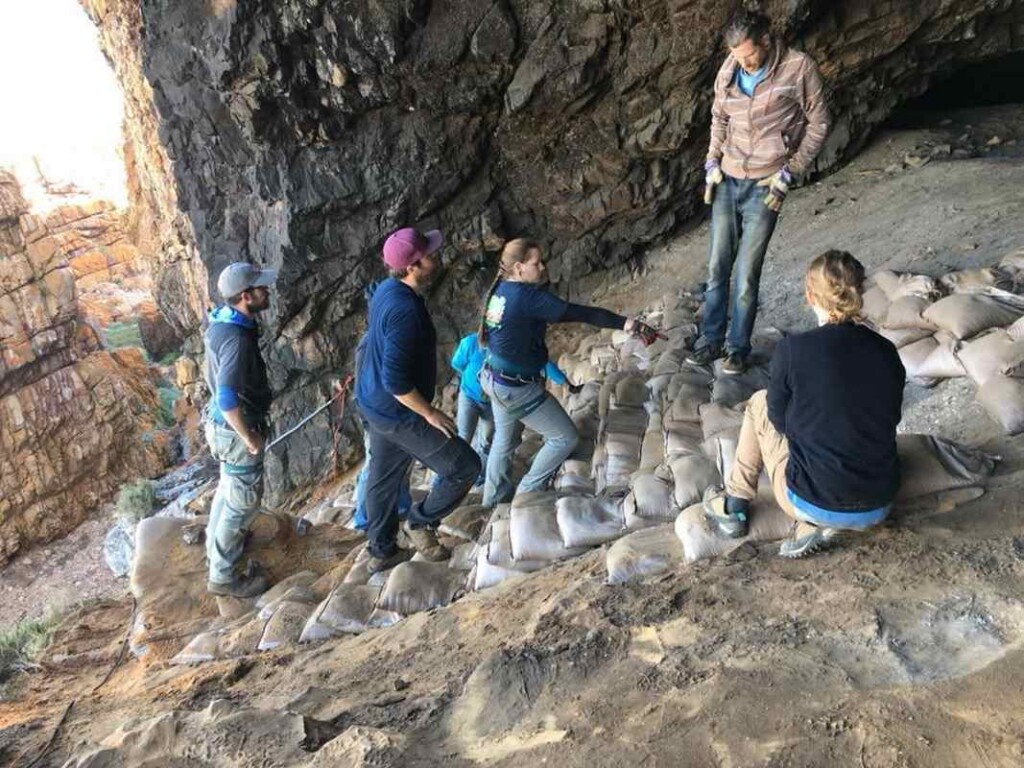
In a cave overlooking the ocean on the southern coast of Africa, thousands of stone tools made by early humans are revealing connections between prehistoric peoples of the continent.
Archaeologists that made the discovery called it an “important” find that hints at the ways in which prehistoric people traveled, interacted, and shared their craft.
The caves, part of what archaeologists call the Robberg technocomplex in South Africa, no longer overlook a plain, but are instead in a towering cliff face over a rocky beach, a result of sea level rise following the end of the last Ice Age.
Study lead author Dr. Sara Watson of the Field Museum in Chicago explained that during the period when the blades were made, between 24,000 and 12,000 years ago, the area would have been filled with antelope much like other inland regions of South Africa today.
“Instead of being right on the water like they are today, these caves would have been near vast, open plains with large game animals like antelope,” said Dr. Watson. “People hunted those animals, and to do that, they developed new tools and weapons.”
Dr. Watson and her team published their findings in the Journal of Palaeolithic Archaeology, and show they were able to tell how the tools were made by examining tiny details in the chipped edges of the blades and stones.
The team made the daily climb with all their excavation and photography equipment, weighing up to 50 pounds per person, up a very steep escarpment aided by ropes.
Inside, beneath ancient dust and dirt, they found thousands of stone tools—mostly small, sharp blades, as well as the larger pieces of rock from which the blades were broken off—called a “core.”

“When your average person thinks about stone tools, they probably focus on the detached pieces, the blades and flakes,” Watson explained. “But the thing that is the most interesting to me is the core, because it shows us the particular methods and order of operations that people went through in order to make their tools.”
MORE NEOLITHIC NOVELTIES: Prehistoric Hunter-Gatherers Heard the Elks Painted on a Cliff ‘Talking’ – (LISTEN)
“Since these are extremely, extremely old sites, from before the end of the last Ice Age, we had to be very careful with our excavation. We used little tiny dental tools and mini trowels so that we could remove each little individual layer of sediment.”
She and her colleagues observed several “distinct” patterns in how the smaller blades had been separated from the cores, and that these patterns had been found throughout southern Africa.
“If we see specific methods of core reduction at multiple sites across the landscape, as an archaeologist, it tells me that these people were sharing ideas with one another.”
ALSO CHECK OUT: Prehistoric ‘Axe Factory’ Found in Britain Triggers Search for More Artifacts
For example, one particular method of breaking tiny bladelets off of a core that Dr. Watson found in the Robberg caves is a style also found hundreds of miles away in locations including Namibia and Lesotho.
“The pattern is repeated over and over and over again, which indicates that it is intentional and shared, rather than just a chance similarity,” she said. “We have a very long and rich history as a species… People living around the last Ice Age were very similar to people today.”
SHARE This Wonderful Work On Prehistoric Africans With Your Friends…
